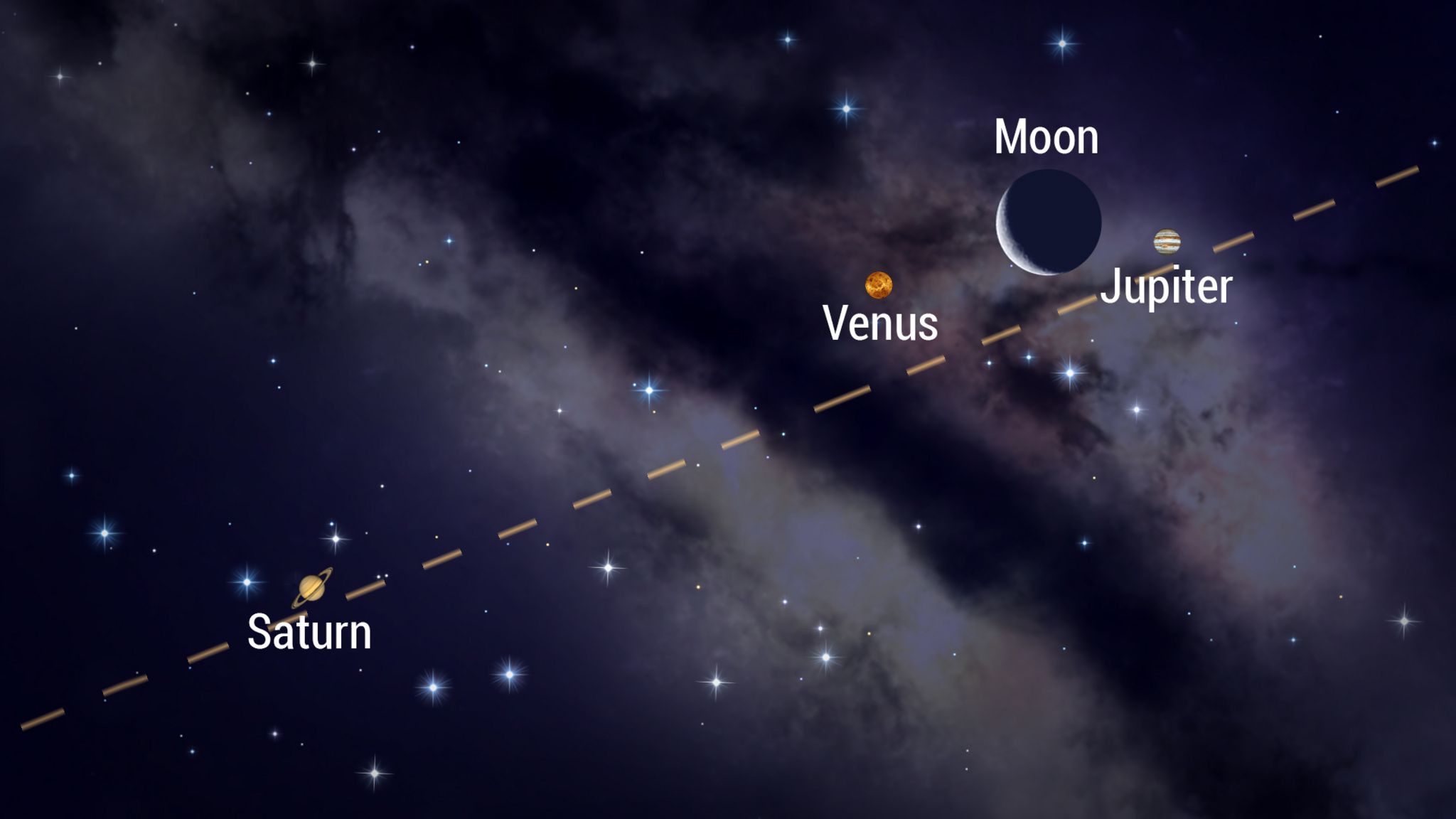The Moon and Planets this Week
This week, the moon will be in the pre-dawn sky, leaving the night sky nice and dark for stargazing. The late rising moon will also linger to remain visible in the morning daytime sky, especially on the coming weekend.
For the second time during January, the old moon will visit Jupiter and Venus. Between about 5 am and dawn in the southeastern sky on Thursday morning, the old crescent moon will land 2.5 finger widths to the upper right of bright Venus and 5.5 finger widths to the lower left of somewhat dimmer Jupiter – making a lovely sight in binoculars and a photo opportunity. To top it off, just after 6 am local time, Saturn will rise to sit two fist diameters to the lower left of the trio.
That pretty chain of objects strung along the ecliptic should remain visible in the growing twilight until about 7 am local time. Later on Thursday, the moon’s eastward orbital motion will carry it even closer to Venus, allowing observers to find Venus in broad daylight.
Finally, on Saturday before dawn, the waning crescent moon will pass less than 3 finger widths to the lower left of Saturn. Hours earlier, centered on 19:50 GMT, skywatchers in northern and northeastern Africa, southern and central Europe, Middle East, western Asia, and parts of Southern Russia can see the moon’s orbital motion carry it in front of that planet, too!
Moon or not, those three bright planets will be in the same part of the sky all week. Jupiter will be rising after 4 am local time, Venus about 30 minutes later, and dimmer, yellowish Saturn last – at about 6:15 am local time, in a brightening sky. Saturn and Jupiter will be lowly moving farther from the sun every morning, but Venus will be descending toward the sun.
Mars remains an ideal target for stargazers (or planet-gazers) this week. After dusk, the Red Planet will appear as a medium-bright, reddish pinpoint of light halfway up the southwestern sky. It will set at about 11:30 pm local time. Mars is slowly shrinking in size and brightness as we increase our distance from it.
Speaking of those ice giants, the missing moonlight is a good reason to try and see those two dim and distant planets. Blue-green Uranus is about 1.25 finger widths above, and slightly to the left of the modestly bright star Torcular (or Omega Piscium). This week, Uranus will already be at its highest point, over the southern horizon (the best position for seeing it clearly) after dusk, then set after midnight. Dim, blue Neptune will set shortly after 8:30 pm local time, so look for it as soon as the sky is dark, while it’s higher. Neptune is sitting about three finger widths to the upper left of the modestly-bright star Hydor (Lambda Aquarii).
